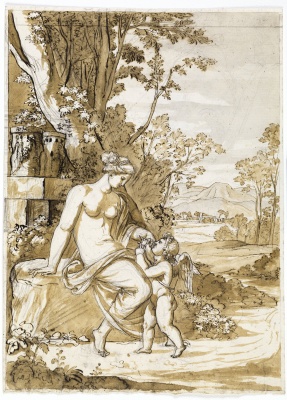Descripción de la Exposición
Manolo Millares (1926-1972), a leading proponent of the Informalist movement, the European counterpart to Abstract Expressionism in America, received critical acclaim early in his career. In 1955 Millares moved from his native Canary Islands to Madrid. His burlap collages, first produced in 1953, remained deeply rooted in the pre-history of the Canaries, in particular that of the aboriginal inhabitants, the Guanches. Embalmed corpses of this pre-Hispanic people were known to Millares from the extensive displays housed in the Museo Canario in Las Palmas: 'In the Canarian Museum I discovered what man is and, above all, the 'finitude' of man', Millares explained. 'I realised that what I saw - the extermination of a race - had been an injustice. That was the original starting-point for my sackcloths. It is something that belongs to the past, of course, but something that enabled me to enter the present and become conscious of it.'
In Madrid, Millares became friends with Antonio Saura, and they formed the core of a new avant-garde movement, El Paso (1957-1960), which advocated political engagement and formal experimentation, exerting a significant influence on the propagation of avant-garde ideals in Spain under the repressive Franco regime. With Saura and artists such as Pablo Serrano, Manuel Rivera, Rafael Canogar and Luis Feito, he sought a new aesthetic, relevant to the post-war era, which would acknowledge the destruction and ravages on humanity caused by the Spanish civil war and the Second World War. With a moral imperative, Millares made direct reference to long-disappeared civilisations, overcome and assimilated. From 1958, the homunculus became one of his recurring themes, alluding to a human presence. Enrique Juncosa described these works as, 'especially evocative, becoming metaphors for the human condition and its fragility, while also signifying its capability for resistance and survival.'
In the El Paso manifesto, Millares explained, 'we are trying to attain a revolutionary plastic art which will include both our dramatic tradition and our direct expression, and be our historic response to a universal activity [...] Our goal is a great transformation of plastic art in which may be found the expression of a new reality.' The burlap of his paintings, frequently taken from sugar sacks, roughly torn, pulled taut with stitched ridges, animated with frayed edges recalls the vegetable fibres used by the Guanches to enshroud the dead. Millares folded the material in upon itself, burned holes through it (often using a blowtorch), tied it in knots and saturated it with paint, the violent manipulations suggestive of wounding and simultaneously expressing the processes of creation and destruction.
Millares's vital, gestural paintwork, is spattered and dripped across the bare burlap in sombre tones, dimensions beyond the surface are glimpsed through the voids. Black predominates, occasionally earthy reds appear, reflecting the existential anguish experienced during this period, suggestive of burned, razed ground. Progressively, however, white would encroach and inhabit the surface of Millares's paintings, transcending the black with a sense of light and space beyond the shadows, possible enlightenment, day following night.
In the late 1950s, his work was exhibited at the biennials in São Paulo and Venice and acquired by MoMA, New York (1957), and the Tate Gallery, London (1962). He was represented in New York by Pierre Matisse Gallery and exhibited with Daniel Cordier in Paris and Frankfurt. In 1971, a solo exhibition of his paintings was held at the Musée d'Art moderne de la Ville de Paris. Firmly established in the Spanish vanguard of the 1950s and 1960s, despite his untimely death at the age of forty-six, Millares continues to be one of the most important Spanish artists of the 20th century.

Exposición. 10 mar de 2025 - 22 jun de 2025 / Museo Nacional del Prado / Madrid, España
Cambio de forma: Mito y metamorfosis en los dibujos romanos de José de Madrazo

Formación. 01 oct de 2024 - 04 abr de 2025 / PHotoEspaña / Madrid, España